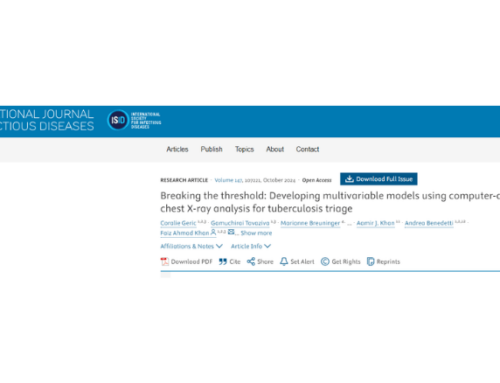Computer-aided detection thresholds for digital chest x-ray interpretation in tuberculosis diagnostic algorithms
🔗2024
🔗Journal/Publication: ERJ Open Research
🔗Read it in full version: https://doi.org/10.1183/23120541.00508-2023
Abstract
Objectives
Use of computer-aided detection (CAD) software is recommended to improve tuberculosis screening and triage, but threshold determination is challenging if reference testing has not been performed in all individuals. We aimed to determine such thresholds through secondary analysis of the 2019 Lesotho national tuberculosis prevalence survey.
Methods
Symptom screening and chest radiographs were performed in participants aged ≥15 years; those symptomatic or with abnormal chest radiographs provided samples for Xpert MTB/RIF and culture testing. Chest radiographs were processed using CAD4TB version 7. We used six methodological approaches to deal with participants who did not have bacteriological test results to estimate pulmonary tuberculosis prevalence and assess diagnostic accuracy.
Results
Among 17 070 participants, 5214 (31%) had their tuberculosis status determined; 142 had tuberculosis. Prevalence estimates varied between methodological approaches (0.83–2.72%). Using multiple imputation to estimate tuberculosis status for those eligible but not tested, and assuming those not eligible for testing were negative, a CAD4TBv7 threshold of 13 had a sensitivity of 89.7% (95% CI 84.6–94.8) and a specificity of 74.2% (73.6–74.9), close to World Health Organization (WHO) target product profile criteria. Assuming all those not tested were negative produced similar results.
Conclusions
This is the first study to evaluate CAD4TB in a community screening context employing a range of approaches to account for unknown tuberculosis status. The assumption that those not tested are negative – regardless of testing eligibility status – was robust. As threshold determination must be context specific, our analytically straightforward approach should be adopted to leverage prevalence surveys for CAD threshold determination in other settings with a comparable proportion of eligible but not tested participants.



